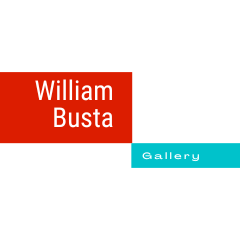William Busta, like most kids, didn’t know what he wanted to be when he was in third grade. He did however have a strong interest in museums. At home he would display small exhibits along with labels he constructed on shelves at his house.
Early life
When he was in sixth grade he needed to see his orthodontist on a regular basis. His mother taught him how to take the bus from Brecksville to downtown Cleveland. There he would walk around and observe the beautifully crafted displays in the early 1960s retail store windows. During the summers when his mother was at Case Western Reserve University for graduate school, he would explore the the museums while she was in class.
Higher Education
He took an Arts and Humanities course in his final year of high school. This introduced him to the evolution of culture throughout history. He studied how the relationship worked between arts disciplines and their functions in society. That class made him realize that culture was very important. That all of the many arts were responding to what was going on in those civilizations; and that they were sometimes furthering an argument or a discourse about those events.
He then used his undergraduate education to expand his understanding of all of the arts. Baldwin-Wallace College awarded him a bachelor’s degree in English, and Case Western Reserve University awarded him a master’s degree in history and museum studies in 1976. William then used his professional expertise to further his understanding of art and how it should be displayed.
Work in Galleries
He worked for two years as the director of the Dacotah Prairie Museum in Aberdeen, SD. After that he spent a year as the assistant director of the Plains Art Museum in Moorhead, MN. Here he developed his philosophy that the most articulate things people create are our arts. He believed that we are create a dialogue with the past and use our voice for the future.
He returned to Cleveland in 1980 to take over as director of the New Organization for the Visual Arts, which he held until 1982. While at NOVA, he saw what artists required from galleries. He also felt compelled to have a purpose in his life that was both social and moral.
His philosophy
He founded the William Busta gallery because he believed that one of the things that could benefit Cleveland was for it to have a stronger cultural identity as a center for the arts.
Bill knew that when an artist was represented by a gallery they could be more productive. They knew when their next show would open, and they could connect more with an audience if they knew where their work was over time.
The William Busta Gallery was founded in this way, with the goal of representing artists who live and work in Northeast Ohio. Bill moved the gallery from Murray Hill Road in Little Italy to Detroit Avenue in the Detroit-Shoreway district, and then to Prospect Avenue near Cleveland State University, where he moved in 2007.
Bill likes to point out that his gallery hosted the first Cleveland shows for a long list of artists who have gone on to tremendous success; many of whom have won Cleveland Arts Prizes.
“I love Bill’s basic honesty and his genuine appreciation for the artists he showcases,” one of those artists, Don Harvey, adds. His ability to not let his own viewpoint get in the way of the creative process and his readiness to support artists as their work evolves over time without placing pressure on them to develop things that sell are exceptional.”
Bill also acknowledges his wife’s contribution to the gallery’s success. “Though Joan’s name wasn’t on the window, she was an integral part of what the gallery was. Without her backing, everything would have been very, very different, or it might not have occurred at all.

